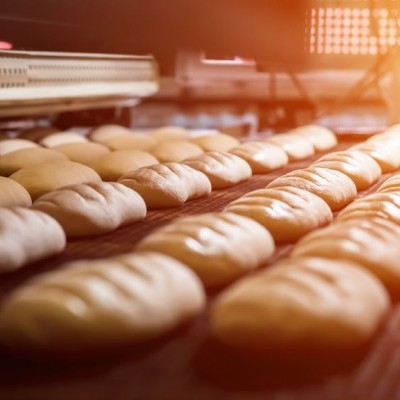
Kill Step Calculator
What is a Kill Step Calculator?
The kill step calculator is a tool used by bakers to validate kill steps against the bacterial pathogen Salmonella.
From a food safety standpoint, the kill step is necessary to eliminate harmful pathogens and reduce the microbial load in food to safe levels. The proper validation of the baking step allows bakeries to sell safe products and comply with FSMA requirements.
Origin
The Kill Step Calculator was developed by AIB International, in cooperation with Kansas State University, the American Bakers Association (ABA), and the University of Georgia. It provides a practical tool to help bakers comply with FDA food safety regulations.
The FSMA Final Rule for Preventive Controls for Human Food (21 CFR §117.155 and 21 CFR §117.160) mandates food processing companies to verify and validate the kill-step to guarantee the safety of food products. These activities must ensure that effective preventive controls are consistently applied to control hazards identified by manufacturers.1,2,3
How does it work?
The components of the kill step calculator are:
- An excel spreadsheet with the model, input and output data
- The procedure with instructions
The procedures and calculator can be downloaded for free from AIB’s website.
Elements
To use the kill step calculator, you need access to Microsoft Excel. Also, you need a a data logger or thermal profiler equipped with thermocouples for measuring product and oven temperatures, and software connectivity to process the data. There are kill step calculators for specific bakery products:
- Hamburger buns
- Basic round top cake muffins
- Nut muffin
- Fruit-filled pastry
- 100% Whole wheat multigrain bread
- Multigrain Bread
- Crispy cookies
- Soft cookies
- Yeast-raised Donuts
- Flour tortillas
- Cheesecake
Procedure
- First, the oven temperatures are measured and monitored using the data logger’s 6-point wire probes. The probes are inserted into the center of the batter or dough.
- Then, internal temperatures are recorded at least 5 times at 15 second intervals by the thermal profiler. After the final run, the temperatures are downloaded into an Excel spreadsheet and analyzed.
- The data points that take the longest time to reach 170°F (77°C) should be selected for analysis in the “Process Lethality Fahrenheit Tab” of the spreadsheet. This ensures you’re working with the coldest point, as a worst case scenario for the thermal destruction of Salmonella. At least 20 time-temperature data points should be collected for analysis.
- Measurements continue to be recorded by data logger until the baking cycle has been completed for batch ovens. For continuous ovens, it’s until it has traveled the full length of the oven. This process should be repeated five times.
- Once the data is imported into the kill step calculator, it will calculate process lethality automatically.
The calculator provides the information by using mathematical models for Salmonella inactivation kinetics:
- Temperature profile for product during baking cycle
- Thermal inactivation parameters D-, Z- and F-value
- Cumulative log reductions
- Total process lethality for salmonella (5 log)
Useful definitions
- D-value (decimal reduction time): the time necessary to get a 90% reduction in the microbial population. Alternatively, the D-value is the time required for a 1 log-cycle reduction in the population of microorganisms.4
- Z-value (thermal resistance constant): The increase in temperature necessary to cause a 90% reduction in the decimal reduction time D.4
- F-value (thermal death time): total time required to accomplish a stated reduction in a population of vegetative cells or spores.
Application
The kill step calculator helps ensure product safety, build consumer confidence, and optimize the baking process. This is most important for products containing raw materials such as eggs, milk products, whole grains, chocolate, peanut butter, or fruit inclusions.
References
- U.S. Food and Drug Administration. “21 CFR 117 – Current Good Manufacturing Practice, Hazard Analysis, and Risk–based Preventive Controls for Human Food.” 1 Apr. 2017, www.accessdata.fda.gov. Accessed 21 june 2019.
- L.H. Channaiah et al., “Validation of the baking process as a kill-step for controlling Salmonella in muffins.” International Journal of Food Microbiology, Elsevier, Vol. 250 (2017) 1–6.
- L.H. Channaiah et al., “Validation of Baking To Control Salmonella Serovars in Hamburger Bun Manufacturing, and Evaluation of Enterococcus faecium ATCC 8459 and Saccharomyces cerevisiae as Nonpathogenic Surrogate Indicators.” Journal of Food Protection, International Association for Food Protection, Vol. 79 (2016) 544–552.
- Singh, R.P., and Heldman, D.R. “Preservation Processes” Introduction to Food Engineering, 5th edition, Academic Press, Elsevier Inc., 2014, pp. 421–470.

